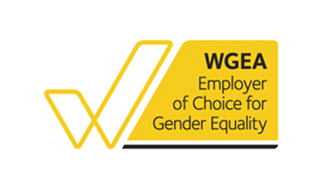- within International Law topic(s)
- in United States
- within International Law topic(s)
- in United States
- with readers working within the Aerospace & Defence industries
- within Technology, Media, Telecoms, IT, Entertainment, Government and Public Sector topic(s)
- with Senior Company Executives, HR and Inhouse Counsel
The introduction of digital tariffs could be a potential new trade risk emerging in 2026 – though most companies are unaware of it.
Since 1998, World Trade Organisations (WTO) members have agreed not to impose customs duties on 'electronic transmissions', to foster cross-border digital trade and e-commerce development. Electronic transmissions cover digital products such as software, cloud services, streaming content, e-books and online services.
The moratorium has been renewed every two years ever since, with the last extension set to expire by 31 March 2026. But in 2026, that could end.
At the WTO's Ministerial Conference in 2024, members barely reached consensus to extend the moratorium. India, South Africa and others made clear: no more automatic renewals. Without agreement at the next Ministerial Conference in 2026, digital tariffs are back on the table — and global digital trade could face a serious rupture.
What does the moratorium do?
The moratorium blocks countries from imposing customs duties on digital products delivered electronically across borders – a legal backstop that has helped enable the modern global digital economy. It does not affect domestic taxes (like GST), or local rules on content, privacy or platform regulation.
It keeps cross-border digital trade predictable, scalable and tariff-free, which is essential for tech exporters, cloud providers, streaming platforms and Software as a Service (SaaS) businesses.
The differences between tariffs and Digital Services Taxes
Even with the moratorium in place, several countries have already moved to tax foreign digital services using Digital Services Taxes (DSTs) or VAT-style models. These include:
- India – 6% 'equalisation levy' on foreign digital advertising and e-commerce services;
- Indonesia – 10% VAT on digital imports like Netflix, Spotify, and Zoom;
- France, UK, Italy, Turkey – targeted DSTs on large digital platforms (some now being phased out under OECD reform efforts).
These taxes are domestic, not border tariffs, and are therefore allowed under current WTO rules. But if the moratorium lapses, countries would also gain the ability to apply customs duties at the border – potentially on the same digital products already subject to DSTs or VAT.
The result would be layered and fragmented digital taxation, especially in emerging markets – and a sharp rise in compliance complexity for exporters.
Why digital tariffs matter now
If the moratorium lapses in 2026, any WTO member can start charging tariffs on digital imports. That could mean:
- Duties on software, updates, games, streaming, AI tools and cloud access;
- New non-tariff barriers to service delivery across markets, including new customs procedures;
- Legal uncertainty around digital product classification (goods vs services);
- Compliance risks, especially for platforms operating in emerging economies; and
- Need for country-specific pricing and delivery strategies.
The WTO and OECD (among other organisations) warn of a potential for significant trade disruption, with small and medium enterprises, exporters and digital innovators the hardest hit. Unlike DST or VAT, which apply to final consumption, tariffs raise the cost of inputs for production, with implications for business competitiveness.
Who does and doesn't support digital tariffs
Most developed economies back the moratorium: the United States, European Union, Australia, Japan, Singapore, United Kingdom, Canada and Chile. They argue tariffs on digital trade would raise costs, splinter global supply chains and undermine services-led growth.
However, opposition is growing. Led by India, South Africa and Indonesia, several countries say the moratorium:
- Denies them tariff revenue in a growing sector;
- Protects global tech giants at their expense;
- Locks them out of industrial policy tools used in other sectors.
The 2024 extension was a last-minute deal – and the language suggests it may be the final one.
Behind the curtain of WTO decision-making
The WTO operates on the basis of consensus, meaning that for most decisions – including whether to extend the digital trade moratorium – all 164 member countries must agree. There is no formal vote. Instead, any single country can prevent a decision from being adopted by simply objecting. This gives opponents of the moratorium, such as India or South Africa, significant leverage. Even if over 160 countries support renewal, a small group of dissenters can block it entirely. This fragile consensus model has made each renewal increasingly difficult – and raises the real prospect that, in 2026, the moratorium could lapse not by majority vote, but by silence from just one or two holdouts.
Can Free Trade Agreements help?
If the WTO moratorium collapses, regional and bilateral trade agreements would become the primary line of defence for tariff-free digital trade. Agreements such as the Comprehensive and Progressive Agreement for Trans-Pacific Partnership (CPTPP), the Digital Economy Partnership Agreement (DEPA) and the Indo-Pacific Economic Framework (IPEF) all contain binding commitments prohibiting customs duties on electronic transmissions.
For Australian companies operating in markets covered by these agreements, these digital chapters can provide a contractual safeguard – even if the multilateral system falters. However, protection only applies where treaty coverage exists, making trade agreement strategy more important than ever.
While these agreements offer legal protections on paper, enforcement is another matter. In today's geopolitical climate, even powerful economies have breached trade rules, including those in FTAs, with little consequence. Recent unilateral tariffs imposed by the US, and retaliatory measures by China, have tested the limits of formal dispute resolution. Many countries are now reluctant to initiate disputes, especially against major trading partners, for fear of political or economic blowback. The result is a widening gap between treaty text and practical enforceability – a risk companies should factor into their digital trade exposure.
Which countries may be preparing to act?
If the WTO moratorium expires in 2026, any WTO member state could begin applying customs duties on digital transmissions. However, some countries, particularly those that have voiced opposition to the moratorium, introduced domestic digital taxes, or signalled policy interest in digital sovereignty or industrial protection, are more likely than others to act.
Australian companies should closely monitor the following jurisdictions in particular:
- India as a leading opponent of the moratorium. India has already introduced a 6% equalisation levy on foreign digital services and is building the legal and technical infrastructure to tax cross-border digital trade more broadly.
- Indonesia has already imposed a 10% VAT on foreign digital services and requires digital platforms to register with the Indonesian government in order to operate in Indonesia. Government officials have questioned the fairness of the moratorium and may explore border tariffs if permitted.
- South Africa has called for 'fiscal space' and WTO reform to permit digital tariffs.
- Egypt supports greater regulatory control over digital services at the WTO and has expressed concern about revenue leakage in the digital economy.
- Brazil has debated various forms of digital taxation. While not a formal opponent of the moratorium, it has a strong tradition of using trade remedies to support domestic industry.
- Nigeria advocates for developing country flexibility at the WTO and is actively expanding its digital regulatory framework. It is possible that Nigeria may follow India or South Africa if digital tariffs become permissible.
- Pakistan faces pressure to increase domestic revenue and reduce tech-sector dependence. Tariffs on digital imports could be politically attractive in Pakistan post-moratorium.
- Bangladesh has not taken a public stance, but rising digital imports and a growing services deficit make it a possible mover in the medium term.
- Kenya and other East African economies have in many cases already implemented VAT on digital services and may explore customs-based tariffs as enforcement capacity improves.
A broader shift towards digital protectionism
The WTO moratorium may have started as a quiet consensus, but its expiry would mark a major shift.
The push to end the moratorium is part of a wider global shift toward digital protectionism. Governments are increasingly asserting 'digital sovereignty' – the idea that data, digital infrastructure, and online services should be governed in the national interest. This has led to a rise in data localisation laws, platform regulations, and efforts to promote domestic digital industries.
For many countries, tariffs on digital imports are seen not just as a source of revenue, but as a tool to support local tech ecosystems and reduce reliance on foreign platforms. The expiry of the moratorium would give these governments a new legal lever to advance that agenda, by pricing foreign digital products differently, favouring local alternatives, or restricting access through economic means.
What Australian industries are most exposed?
Australia punches well above its weight in digital services. The expiry of the moratorium would hit sectors that rely heavily on cross-border digital delivery, including:
- Technology and SaaS: One of the most exposed
sectors is SaaS – Australia's fastest-growing category of
digital export. Most of Australia's relatively recent success
in the technology sector is due to cloud computing and SaaS. SaaS
businesses deliver cloud-based software platforms (such as HR,
finance, design, logistics or compliance tools) to users across
borders on a subscription basis. Because of the moratorium, some of
our largest tech companies have been able to reach larger markets
without having to set up expensive distribution and support
networks in foreign jurisdictions. Were it to expire, Australian
firms exporting cloud-based software, data analytics tools and
enterprise platforms could face digital import duties in key growth
markets across Asia, Africa and the Middle East.
Hypothetical: A Sydney-based SaaS company providing cloud-based workforce management tools to Indonesian and Indian clients could face new tariffs or dual taxation on software access and data hosting.
- Creative and media industries: Streaming
platforms, gaming studios and digital content producers may
encounter tariffs on downloads, subscriptions or digital
licensing.
Hypothetical: An Australian animation studio licensing digital assets to streaming platforms in South Africa could face customs duties on the file transmission – on top of local content taxes.
- Education and EdTech: Universities and EdTech
providers delivering online learning and materials to international
students – particularly in Southeast Asia – could see
higher costs and compliance hurdles.
Hypothetical: A Melbourne-based EdTech startup delivering interactive courseware to students in Southeast Asia could see platform access costs rise due to tariffs on content downloads.
- Professional services: Firms providing
architecture, engineering, legal or consulting services via cloud
platforms or digital tools may be indirectly affected through
tariff-related pricing distortions.
Hypothetical: A digital architecture firm using cloud-based design software to collaborate with clients in Vietnam may encounter new charges on exported design files or remote toolkits.
- Fintech and cybersecurity: Emerging fintech
firms and digital security providers operating across borders
– often in regulatory sandboxes or partnerships – may
face new compliance risks if digital tools attract duties.
Hypothetical: An Australian cybersecurity company offering real-time threat detection through offshore data centres could see local clients face tariffs on access, undermining competitiveness.
Any industry that monetises digital delivery – either through B2B platforms, streaming, licensing, or SaaS – has a stake in whether tariff-free digital trade survives 2026.
What companies should do now
For companies delivering digital products or services across borders – especially in content, cloud, software or platform infrastructure – this is not a niche legal issue, but a live trade and tax exposure.
To understand and prepare for a future with digital tariffs, Australian businesses are recommended to:
- Map exposure to markets likely to impose digital tariffs post-2026;
- Distinguish between tariff risk and DST exposure in tax and compliance planning;
- Review digital trade protections under FTAs and BITs;
- Engage early with local regulators, in particular in Asia, Africa and Latin America;
- Scenario-plan for compliance, pricing and delivery impacts under potential new duties in key digital markets.
The WTO moratorium may have started as a quiet consensus, but its expiry would mark a major shift. Mapping and preparation are key. The cost of inaction could be high.
The content of this article is intended to provide a general guide to the subject matter. Specialist advice should be sought about your specific circumstances.
 |
 |
| Lawyers Weekly Law firm of the year 2021 | Employer of Choice for Gender Equality (WGEA) |




